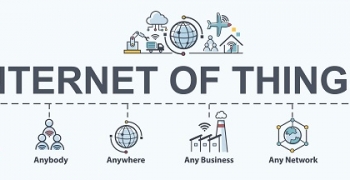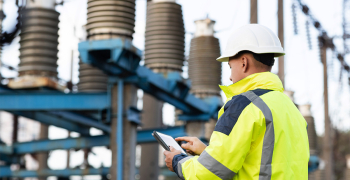Good Morning!
Imagine waking up to that perfectly brewed cup of coffee – a result of your smart alarm clock communicating seamlessly with your coffee maker.
Again, as you start for work, your car navigates by itself through the city’s traffic, all thanks to real-time, connected data networks. And at work, the equipment predicts their own failure scenario before they disrupt operations and initiate maintenance requests by themselves.
These scenarios, once in the realm of science fiction, are now everyday realities of the Internet of Things (IoT).
IoT is quietly and profoundly transforming the way we live and work. From consumer devices to large-scale industrial systems, we are witnessing a growing adoption across the global landscape.
So, What is IoT?
At its core, the IoT refers to a network of physical objects — devices, appliances, vehicles — that are embedded with software, sensors, and connectivity features, enabling collection and exchange of data over a network. What makes IoT unique is its intelligence. With IoT, everyday objects become capable of sensing their environment, learning from collected data, and acting autonomously.
The concept extends far beyond consumer devices like smart speakers and fitness trackers. IoT-enabled offerings are revolutionizing healthcare with wearables that monitor vital signs, transforming manufacturing with sensors that boost production efficiency, and even optimizing how cities operate through smart infrastructure.
The Numbers Speak for Themselves
IoT’s growth trajectory is nothing short of explosive, with several key factors contributing to its sustained expansion:
- Miniaturization and Cost Reduction: The drop in prices for sensors and chips has made IoT hardware more affordable and accessible.
- Advances in Wireless Communication: The rollout of 5G networks is a game-changer, enabling faster and more reliable data transmission.
- Cloud and Edge Computing: With robust cloud platforms and efficient edge computing, IoT systems can process data where it’s needed most.
- AI and Machine Learning Integration: IoT devices now leverage AI to derive more sophisticated insights and deliver greater autonomy.
These innovations are helping businesses and individuals adopt IoT at a faster pace, embedding it into the fabric of modern life.
Hi-Tech Industry Leading the Revolution
The Hi-Tech sector is at the very heart of IoT’s success, driving its adoption through innovation and expertise. From research labs to production floors, Hi-Tech companies are providing the crucial building blocks that make IoT possible. The impact is visible across:
API Development: Hi-Tech engineers are designing APIs that enable seamless interoperability between different devices and platforms, ensuring a unified IoT ecosystem.
Energy-Efficient Chipsets: Developing ultra-low-power processors that extend the lifespan of devices is key to IoT’s sustainability.
Edge Computing Solutions: Hi-Tech firms are enabling smarter, faster, and more localized data processing by developing cutting-edge edge-computing frameworks.
Cybersecurity Measures: With IoT systems often being vulnerable to breaches, Hi-Tech experts are at the forefront of creating secure IoT protocols.
Real-World IoT Applications Redefining Smart Living
IoT solutions are not just a concept for the future. Today, it is a deeply integrated reality spanning various aspects of daily life and industrial operations. This includes:
- Smart Agriculture
IoT-powered agricultural tools are revolutionizing farming. Soil sensors monitor moisture and nutrient levels, enabling farmers to optimize water and fertilizer usage. By combining IoT with drones, farmers can survey vast fields, detect crop diseases early, and improve yield predictions.
- Smart Retail
Retailers are using IoT to enhance efficiency and customer experience. Smart shelves equipped with inventory sensors automatically reorder products when stock is low. IoT-enabled data analytics also provide retailers with insights into buying behavior, helping with better product placement and promotions.
- Industrial IoT (IIoT)
Manufacturing and industrial operations are one of the largest beneficiaries of IoT. Predictive maintenance systems analyze the health of factory equipment to identify potential failures before downtime occurs. This not only saves costs but improves operational efficiency.
IoT solutions are helping transform urban living through smart city initiatives. Intelligent traffic sensors help optimize vehicle congestion, while smart waste collection systems notify municipal services when dumpsters are full. These innovations, to mention a few, are driving sustainability and livability in cities across the globe.
- Connected Healthcare
IoT devices in healthcare are enabling remote patient monitoring, especially for chronic conditions. Wearables like glucose monitors and ECG patches collect real-time health data, which is shared with healthcare providers to improve diagnosis and treatment.
The Future of Hi-Tech: IoT?
IoT represents a convergence of hardware, software, and data. Its ability to provide actionable insight and automation is becoming indispensable for enterprises competing in data-driven industries. For individuals, IoT continues to deliver unprecedented levels of convenience and efficiency. Whether it’s improving business productivity or enhancing smart living, IoT demonstrates a level of synergy between technology and human life that was previously unimaginable.
By continuing to innovate in this space, Hi-Tech companies will lead the way toward a future where IoT-enabled systems are ubiquitous, secure, and highly adaptive across all aspects of life.



